#team coaching
Explore tagged Tumblr posts
Text
Quale tipo di Coaching fa per te?
Prima di cercare quale tipo di Coaching fa per te, Scopri se è il Coaching quello che ti serve! Se sei arrivato fin qui, probabilmente stai cercando di capire quale tipo di coaching scegliere e districarsi nell’overflow di informazioni potrebbe risultare devastante: Personal Coaching, Business Coaching, Sport Coaching, Medical Coaching… l’elenco sembra infinito. Prima di tuffarti nella scelta,…

View On WordPress
#bedifferentbereal#Coaching#coaching evolutivo#coaching strategico#coaching tattico#come si diventa coach#Corsi Coaching Milano#errori nella scelta del coaching#guida al coaching#ipnocoaching#Life Coaching#miglioramento personale#quale coaching fa per me#ReaL Coaching Academy#scegliere il coaching giusto#Scuola Re.Al Coaching#team coaching#tipologie di coaching#trasformazione personale coaching
0 notes
Text
Sustaining High Performance: The Long-Term Benefits of Team Coaching
Coaching proves to be a valuable tool for developing individuals and businesses. Did you know that 72 percent of individuals who received coaching reported improved communication skills? In comparison 71 percent of people stated an enhancement of interpersonal skills. Yes, that’s true! That is why more and more organizations are prioritizing team coaching. The core aim is to continually develop the skills of team members, cultivate a learning mindset, and ultimately establish high-performing organizations.
In this blog, you will explore the long-term benefits of team coaching. Let’s dive in!

Understanding Team Coaching
Team coaching involves assessing team dynamics, identifying key areas for improvement, and providing feedback and guidance to teams. The main goal is to enable teams to work together and achieve a common objective. Team coaching focuses on fostering collaboration among team members, developing effective communication, and building a culture of accountability and trust.
Team coaching is quite different from traditional team training. While the latter focuses on developing knowledge and skills essential to perform a specific task, the former emphasizes the development of people and teams. It goes beyond team building and allows organizations to unlock their full potential.
Enhancing Collaboration and Communication
Team coaching creates an environment of open dialogue that allows team members to freely express their ideas and concerns. This openness develops trust within the team, enabling effective sharing of diverse perspectives and better collaboration. Moreover, team coaches can provide valuable feedback on communication styles and allow team members to find ways to work together.
Boosting Engagement and Morale
Team coaching helps foster a positive work environment by promoting a culture of support and respect and addressing interpersonal dynamics. When team members feel heard and valued, their engagement level and morale increase naturally. As a result, it can lead to lower turnover rates, higher job satisfaction, and a more motivated workforce.
Developing Problem-Solving Skills
Fostering a problem-solving mindset allows teams to find innovative solutions. With proper coaching, team members can start thinking critically, explore alternative approaches, and challenge assumptions. Such an approach can improve the decision-making and problem-solving ability of teams, leading to more strategic and effective outcomes.
Long-Term Performance Sustainability
Coaching allows team members to become more aware of their roles and responsibilities, resulting in a higher level of accountability and more focused efforts. It also helps in the identification and elimination of potential obstacles that may affect performance. As a result, sustaining high performance and remaining adaptable to the changing environment becomes effortless.
Measuring Success: Key Metrics for Team Coaching
Are you wondering how to evaluate the success of team coaching? Delve into the key metrics you can leverage!
Goal Achievement Rate: This metric can measure the progress of teams towards a predefined, specific goal.
Employee Engagement: Focuses on evaluating the job satisfaction, morale, and commitment of team members to the organization.
Conflict Resolution: This metric maps how efficiently and effectively teams can resolve interpersonal issues.
Retention Rate: It evaluates the impact of coaching on the turnover and retention rate of the organization.
Conclusion: Investing in Team Coaching for Lasting Success
Team coaching is indeed the key to long-term organizational success. Are you ready to get started? Coach Transformation Academy can be the perfect destination to coach your teams and set them up for success.
Source: https://coachtransformation.com/sustaining-high-performance-the-long-term-benefits-of-team-coaching/
0 notes
Text
Leaders: Are You Wearing the Emperor's New Clothes?
“The Emperor’s New Clothes” is a short story written by Danish author Hans Christian Andersen. It is about two weavers who promise an emperor a new suit of clothes that they say is invisible to those who are unfit for their positions, untrained, or incompetent. In reality, the tailors make no new clothes at all. Instead, they make everyone believe the clothes are invisible to them. When the…
#Best Executive coaches near Houston TX#Best Institute for Executive Coaching near Houston#Business Consultants in Houston TX#Business Consulting Services in Houston TX#Centre for Executive Coaching#Executive and leadership coaching in Houston TX#executive coaching#Executive Coaching And Mentoring#Executive Coaching Courses#Executive Coaching Edge#Executive Coaching Exercises#Executive Coaching Houston Tx#Executive Coaching Icf#Executive Coaching Institute#Executive Coaching Institute in Houston TX#Executive Coaching Services#Executive Coaching Toolkit#Executive Coaching Topics#Houston Executive Coaching Institute#Houston Leadership Coaching#Leadership and team coaching near Houston#leadership development#leadership development near me#Management Consulting Firm Houston TX#One-on-one executive coaching#Professional and leadership coaching#team coaching#Team coaching consultant#Team development consultant
0 notes
Text
#icf accredited coaching programs#global leadership program#leadership development programs#icf coaching international#icf coaching certification level 1#ICF Advanced Certification in India#ICF ACC level 1#ICF ACC (Associate Certified Coach)#Become an ICF-certified coach#Business & Leadership Coaching#international coaching federation#icf coaching certification requirements#icf credentialing exam pass rate#icf credentialed coach#team coaching
0 notes
Text
no but imagine being the Palmetto State track team coach and learning about this kid who can run a mile in four minutes and so you go and check it out but surprise surprise the exy coach from the shit exy team has him already so you try to negotiate for the player because he might be the fastest kid you’ve ever seen but the exy coach keeps saying no and no and so you watch this kid that can RUN THE MILE IN FOUR MINUTES become the fastest exy player in history and you’re sobbing falling to your knees because you could’ve had him in the track team winning you gold medals in the olympics but instead you just stare from your campus office as this redhead short exy obsessed kid runs laps around the entire uni campus for hours on end without getting tired and just wishes all hell on exy
#i bet the entire track team hated the redhead coach sang praises over who wasn’t even on the team#aftg#aftg hc#all for the game#the foxhole court#exy#palmetto state foxes#neil josten#andrew minyard#aftg andreil
6K notes
·
View notes
Text
Master Professional Growth with PCC Coach Training Programs and Team Coaching
Discover the transformative power of PCC coach training programs and team coaching. Achieve professional excellence with advanced coaching techniques and foster collaborative team environments. Learn more at Team Transformation:
0 notes
Text
Team Coaching: Transform Your Team into High Performers
In today’s competitive business landscape, the success of an organization often hinges on the performance of its teams. Effective team coaching is essential for transforming a group of individuals into a cohesive, high-performing unit. Team coaching focuses on enhancing team dynamics, fostering collaboration, and aligning individual efforts with collective goals. This article explores the importance of team coaching, various strategies to improve team performance, and how investing in team coaching can drive long-term success.
1. The Power of Team Coaching
Team coaching is a strategic approach to developing high-performance teams by improving communication, collaboration, and problem-solving skills. Unlike individual coaching, team coaching emphasizes the collective goals and dynamics of the team. It helps team members understand their roles, appreciate diversity, and work towards a common objective. By addressing team dysfunctions and fostering a culture of trust and respect, team coaching enables teams to achieve their full potential and contribute to the organization’s success.
2. Key Team Coaching Strategies
Effective team coaching involves several key strategies that help teams navigate challenges and achieve success:
Enhancing Communication
One of the primary goals of team coaching is to improve communication among team members. Open and transparent communication is essential for building trust, resolving conflicts, and ensuring that everyone is aligned with the team’s objectives. Team coaching sessions often include activities and exercises that promote effective communication and help team members articulate their thoughts and ideas clearly.
Fostering Collaboration
Team coaching helps create a collaborative environment where team members work together towards common goals. It involves building a shared understanding of the team’s mission, setting clear expectations, and encouraging teamwork. By fostering collaboration, team coaching enables teams to leverage their collective strengths, address challenges more effectively, and achieve better results.
Addressing Team Dynamics
Understanding and managing team dynamics is crucial for the success of any team. Team coaching helps teams recognize and appreciate the diverse skills, perspectives, and personalities within the group. It also addresses common dysfunctions such as lack of trust, fear of conflict, and lack of commitment. By focusing on team dynamics, team coaching ensures that all members are engaged, motivated, and working towards the same goals.
Building a Culture of Continuous Improvement
Team coaching fosters a culture of continuous learning and improvement. It encourages teams to reflect on their performance, identify areas for growth, and develop action plans for improvement. This culture of continuous improvement helps teams stay adaptable, innovative, and resilient in the face of changing business environments.
Interlink Suggestion: Link to an article on Leadership Development through Coaching.
3. Benefits of Investing in Team Coaching
Investing in team coaching offers numerous benefits for organizations, including:
Improved Team Performance: Team coaching helps teams set and achieve ambitious goals, leading to better performance and results.
Enhanced Problem-Solving: Coaching equips teams with the skills and strategies to address challenges and solve problems more effectively.
Greater Innovation: By fostering collaboration and open communication, team coaching encourages creativity and innovation within the team.
Stronger Team Cohesion: Coaching helps build a sense of unity and trust among team members, leading to a more cohesive and motivated team.
Positive Work Environment: Team coaching creates a positive work environment where team members feel valued, respected, and supported.
4. Implementing Effective Team Coaching
To implement effective team coaching, it’s essential to choose the right approach and tools that align with your team’s needs and goals. Working with experienced coaches who understand your organization’s dynamics and challenges can significantly enhance the effectiveness of the coaching process. Regular coaching sessions, combined with continuous feedback and reflection, ensure that teams remain focused, engaged, and committed to achieving their objectives.
Conclusion
Team coaching is a valuable investment for any organization looking to enhance team performance, foster collaboration, and achieve long-term success. By focusing on key areas such as communication, collaboration, and team dynamics, team coaching helps teams navigate challenges and work towards common goals. Embrace team coaching to unlock your team’s full potential and drive organizational success.
0 notes
Text
Comprehensive Team Coaching Certification Program
Discover the essentials of team coaching with our International Certification in Team Coaching. This team coaching program is designed to equip you with the skills and methodologies needed to effectively coach teams, fostering collaboration and achieving collective goals. Join us to gain practical insights and tools that will transform team dynamics and drive success.
0 notes
Text
Building Outstanding Teams: Leveraging Dysfunction and Conflict for Extraordinary Results

In the realm of teamwork, harmony and cohesion often take center stage. However, there's a lesser-known truth: dysfunction and conflict, when handled adeptly, can catalyze exceptional team performance. It's a paradoxical notion, but one that high-performing teams understand and harness to their advantage. In this blog post, we delve into the dynamics of such teams, exploring how they leverage discord as a catalyst for innovation, growth, and ultimately, success.
Embracing Diversity of Thought
Outstanding teams recognize that diversity extends beyond surface-level differences. It encompasses varying perspectives, experiences, and approaches to problem-solving. Rather than shying away from conflicting viewpoints, they actively seek them out. These differences spark healthy debates, challenging the status quo and fostering a culture of innovation.
Constructive Conflict: Fuel for Innovation
Conflict, when approached constructively, serves as a crucible for creativity. High-performing teams don't fear disagreements; they view them as opportunities for growth. By encouraging open dialogue and respectful dissent, they unearth innovative solutions that may have otherwise remained hidden. Conflict becomes a means to refine ideas, test assumptions, and ultimately, drive progress.
Building Trust Through Vulnerability
Central to navigating conflict is a foundation of trust. High-performing teams cultivate trust through vulnerability, embracing authenticity and transparency in their interactions. When team members feel safe to express their opinions and vulnerabilities, they foster a culture of psychological safety where constructive conflict can thrive. Trust becomes the glue that binds the team together, enabling them to weather storms and emerge stronger.
Constructing a Conflict-Competent Culture
Crafting a culture that embraces conflict requires intentional effort. Leaders play a pivotal role in setting the tone, modeling vulnerability, and encouraging open communication. They establish norms for constructive conflict resolution, emphasizing active listening, empathy, and a focus on solutions rather than blame. By fostering an environment where conflict is viewed not as a hindrance, but as a catalyst for growth, leaders empower their teams to achieve extraordinary results.
Leveraging Dysfunction for Growth
In the pursuit of excellence, high-performing teams recognize that dysfunction is not a sign of failure, but an opportunity for growth. They embrace the messiness of collaboration, understanding that it's through grappling with challenges that they unearth their greatest potential. Rather than seeking perfection, they strive for continuous improvement, using conflict as a springboard for innovation and evolution.
Conclusion
In the journey towards building outstanding teams, embracing dysfunction and conflict is not merely a strategy—it's a mindset. By reframing discord as a catalyst for growth and innovation, high-performing teams harness the full spectrum of human experience to achieve extraordinary results. As leaders and team members alike, let us embrace the discomfort of conflict, knowing that on the other side lies the promise of greatness.
#sports#coaching#gymnastics#mental health#sports training#elite coaching#mental wellbeing#healthy living#kiserspeaks#healthy diet#high performance recovery#high performance living#high performance coaching#high performance training#high performance#elite nutrition#elite sports#elite training#elite gymnastics#elite#teamwork#team coaching#team collaboration#team conflict#team disfunction#results
0 notes
Text
Top 5 Ways for Managers to Become Effective Coaches
Modern workplaces are witnessing a radical transformation. Economic turbulence, generational shifts, and technical developments create a culture where traditional corporate ladders are no longer attractive to employees. Today, employees prioritize growth, human value, and purpose over managerial power and titles.
Historically, one waited to ascend on the departmental rungs starting at lower positions and over the years moving up the corporate ladder. However, modern-age employees seek careers and promotions where their potential can be completely unlocked. They prefer to work with managers who promote their development and growth.
Organizations that fail to evolve may lose their talented people as they seek other opportunities. The solution is creating a coaching culture where leaders adopt collaborative approaches to work with their teams. Adopting a growth mindset across the organization enhances productivity and ensures top talent stays empowered and engaged.
Here are five ways managers can become effective coaches

1 note
·
View note
Text
When HR partners up with Agile to run a Kaizen program
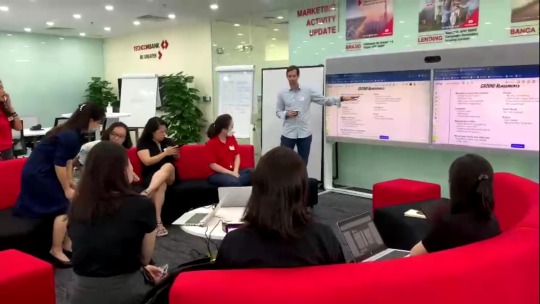
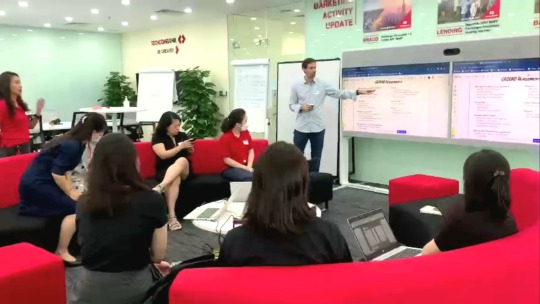
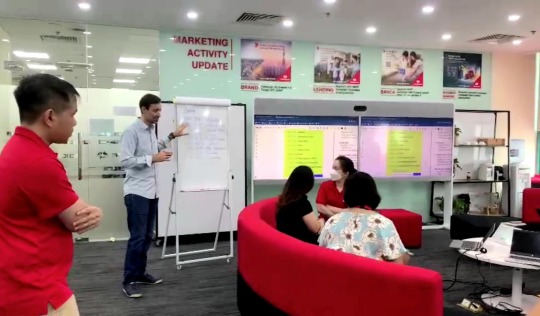
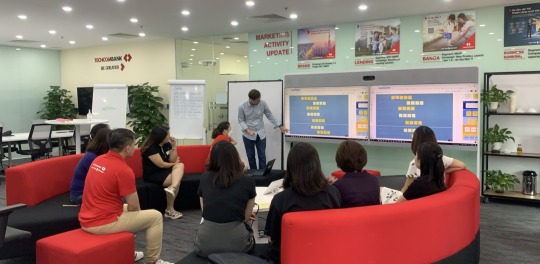
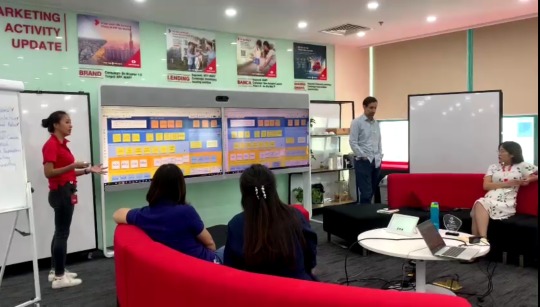
August 2022, The Agile Center of Excellence partnered with Human Resource (incdluing the fantastic Ha Bui) to ensure smooth onboarding and active engagement in the WeKaizen development program.
-------------
Let's first have a look at WeKaizen's missions:
Empowering Employees: Enhance Kaizen capabilities through Lean Production training, equipping all employees with the essential skills and mindset to drive continuous improvement.
Cultivating a Kaizen Culture: Promote implemented Kaizen initiatives, fostering instant reward and recognition to incentivize participation and celebrate success
--------------
Let me precise that WeKaizen program is open to all Techcombank employees, encompassing everyone from top managers to regional relationship managers. WeKaizen program encourages participants to identify areas for improvement in internal processes and even discover simple ways to boost employee happiness:
No problem is too small or too big, isn't it?!
Here are the key areas where we provided crucial support:
Kaizen Practice - Collaborative Problem-Solving Teams brainstorm and collaborate to devise solutions (Kaizen) for specific team challenges.
Kaizen Fair - Showcasing Excellence Recognizing and rewarding outstanding individuals and teams with the most impactful Kaizen initiatives.
The HR team actually entrusted our members with their foundational coaching skills to guide participants in refining their ideas and achieving success.
In a coaching point of view, our success hinges on our ability to help participants transform their initial ideas into concrete concepts with actionable plans.
Despite considerable workload pressures facing our team with delivering the bank's core functionalities, the Head of Transformation and the new Head of Agile approached me with this request.
Partnering with my experienced colleague Son Le and the energetic Hien Nhu, they were the perfect fit! Togehter we embarked on this initiative, initially with some reservations about tackling complex problems with diverse groups for next following Saturdays...
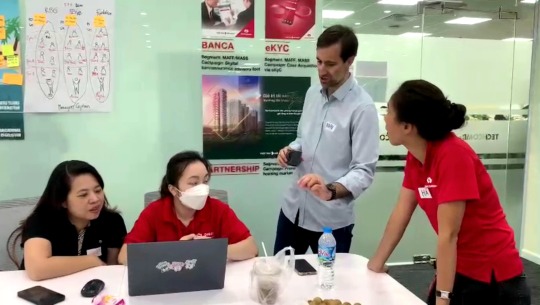
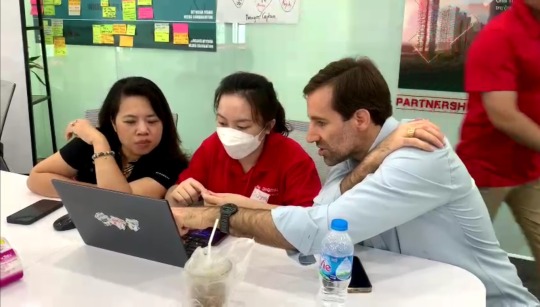

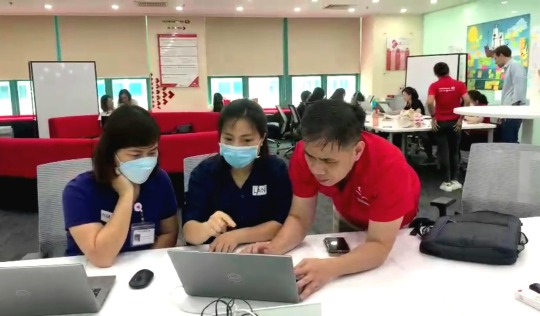
The experience proved to be absolutely rewarding and engaging!
While numerous pre-existing canvases (Lean Startup Canvas, Product Canvas, Team Canvas, etc.) existed, I, after thorough research, proposed using a novel canvas tailored to encourage emergent concepts through Design Thinking methodologies.
The Proposed Canvas:
Inspired by a Business Case Canvas and a Product Vision template, here's the structure we suggested for facilitating the exercise:
Why? Identify the problem/opportunity and the overall vision to address it.
What? Describe the potential solution to tackle the identified issue.
End User? Define the individuals most impacted by the problem or the prime beneficiaries of the solution.
What the Success looks like? Outline the idealistic impact on users and the market if the solution is implemented.
Success Measurement: Determine the key metrics to gauge success.
Timeline & Milestones: Establish a feasible timeline and key milestones for achieving the desired outcome.
How-To: Define the essential steps to bring the solution to life.
Who's Involved? Identify the necessary team members or profiles required for implementation.
Stakeholders: Pinpoint sponsors and individuals accountable for the initiative's success.
Resources: Determine the necessary technical components and procurement needs.
Constraints: Acknowledge and understand the current limitations.
Risk Assessment: Identify and address potential risks.
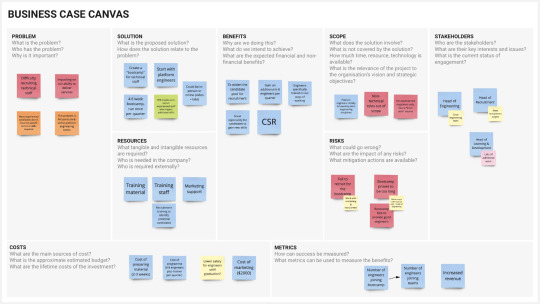
Through collaborative refinement sessions with various groups, our team successfully enhanced over 20 Canvases. Additionally, we equipped participants with effective pitching skills to present their ideas within a five-minute timeframe. Remember that the most impactful Canvases will be presented to the bank's divisional heads.
We were excited to witness the continued success of the WeKaizen program and the positive impact it is having on Techcombank!
#productvision#Kaizen#banking#coaching#agile consulting#agile coach#team coaching#techcombank#vision#scrummaster
0 notes
Text
Mindfulness e le prove scientifiche dei grandi Benefici
Scopri come gli effetti della Mindfulness abbiano benefici scientificamente provati per il Benessere Psicofisico La mindfulness, spesso tradotta come “consapevolezza” o “piena attenzione”, è una pratica che invita a concentrarsi sul presente in modo non giudicante. Dopo il primo articolo dedicato (che puoi trovare QUI) ora ci dedichiamo alla ricerca di alcune delle innumerevoli prove…
#bedifferentbereal#benessere#Corsi Coaching Milano#Corsi Ipnosi Milano#gestionedellostress#ipnosi#mindfulness#mindfulnessbased#Real Coaching e Ipnosi#salutementale#saluteolistico#selfcare#team coaching
0 notes
Text
From Good to Great: How Team Coaching Transforms Business Outcomes

Everyone knows organizations stand on the firm shoulders of organized and efficient teams. Good teamwork is essential to keep the wheels running in the corporate landscape. However, what do the stats say? Let’s take a look.
According to a study, a staggering 56% of employees worldwide felt disconnected from their organization and their colleagues due to remote working. Yes, that was during a global pandemic, but teamwork hasn’t become easy now. In fact, according to Gallup data, 51% of U.S. managers admitted restructuring or reorganizing their teams in 2023 to solve critical business issues.
Whether your team is struggling with a deadline, or there are issues like conflicts, lack of trust, and unclear goals that keep them from reaching their full potential, team coaching can be a great way to unlock the full potential of your team. In today’s high-pressure enterprise ecosystem, it’s not enough to have talented individuals in your organization, success depends on how well those organizations can work together as a cohesive unit. That’s where team coaching shines. It can aid companies in transforming miscommunication into clarity, conflict into collaboration, and uncertainty into shared purpose.
But, how exactly does it work, and why should businesses invest in it? Here’s a guide for you to get started!
A Basic Idea of Team Coaching: More than Mere Guidance
Unlike conventional training programs, team coaching is a collaborative process where a coach works with an entire team to identify strengths, address weaknesses, and align goals. Professional team coaches understand how to foster open communication, build trust, and enhance problem-solving skills. In fact, the beauty of team coaching lies in its adaptability. Coaches use their experience to assess the team dynamics and understand its culture, values, and existing communication patterns. With this evaluation, they create targeted strategies that resonate deeply with the team members for better outcomes.
Improving Communication
In workplaces, teams are a mix of individuals with diverse skills, backgrounds, personalities, and opinions. While this diversity can be a strength, it can also lead to misunderstandings. In such scenarios, the practicality of team coaching principles becomes evident, offering a valuable tool to manage this diversity and avoid miscommunication.
Coaches skilled in team coaching can utilize techniques like role-playing or facilitated discussions to help team members understand each other’s perspectives and communicate effectively. This can lead to a significant reduction in conflict, providing a sense of reassurance and fostering a more harmonious and hopeful work environment.
Driving Accountability and Responsibility
A well-coached team is also more accountable. Team coaching sessions often involve setting clear expectations and establishing individual and collective responsibilities. Coaches enable teams to create a culture of accountability where members hold themselves and each other to high standards.
This sense of ownership leads to higher performance levels and better outcomes. When everyone is committed to a shared purpose and understands their role in achieving it, they are more motivated to put in their best effort. This accountability extends beyond just completing tasks—it encompasses the quality of work, ethical considerations, and a commitment to the organization’s broader objectives.
The Bottom Line
Investing in team coaching is so much more than a trend; it’s a strategic move that can significantly impact business outcomes. Whether you are an executive in a leadership position or a CEO, if you want to take your organization from good to great, consider team coaching with Coach Transformation Academy. We would say, it’s an investment in people that pays dividends in performance, innovation, and sustained growth. The journey to greatness can start with a single step; contact us, and we can take it together!
————————————————-
Source: https://coachtransformation.com/how-team-coaching-transforms-business-outcomes/
0 notes
Text
Leaders: Is Your Myopia Your Utopia?
Watch out for becoming too single vision in your leadership style.
When it comes to leadership and management, nearsightedness or myopia is a common occurrence. What does that mean? Is Your Myopia Your Utopia? Single vision Since effective leadership is part art as much as part science, I see too many managers taking a nearsighted look at their role and responsibility. Nearsightedness is called myopia. By this I mean we place more emphasis on the duties and…

View On WordPress
#Best Executive coaches near Houston TX#Best Institute for Executive Coaching near Houston#Business Consultants in Houston TX#Business Consulting Services in Houston TX#Centre for Executive Coaching#doug thorpe coaching#Executive and leadership coaching in Houston TX#executive coaching#Executive Coaching Articles#Executive Coaching Houston Tx#Executive Coaching Institute in Houston TX#Houston executive coaching#Houston Executive Coaching Institute#Houston Leadership Coaching#Leadership and team coaching near Houston#leadership development#leadership development near me#Leadership Qualities#Management Consulting Firm Houston TX#One-on-one executive coaching#Professional and leadership coaching#team coaching#Team coaching consultant#Team development consultant
0 notes
Text
Leadership Coaching for CEOs – Why and How?

Corporate leaders and CEOs would feel the same if they had a sounding board like Paddy Upton. Leadership coaching for CEOs can be a valuable investment for individuals in leadership positions and the organisations they lead. Here’s a breakdown of why and how leadership coaching for CEOs is beneficial- https://kabirlearning.in/leadership-coaching-for-ceos-why-and-how/
#Leadership Coaching#leadership coaching companies in bangalore#leadership coaching program#CEO COACHING#LEADERSHIP COACHING FOR CEO#LEADERSHIP COACHING SERVICE#LEADERSHIP DEVELOPMENT COACHING#TEAM COACHING
0 notes